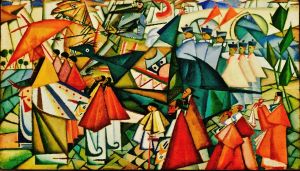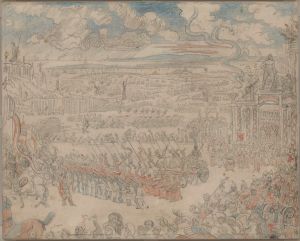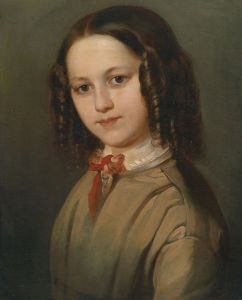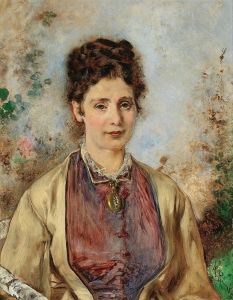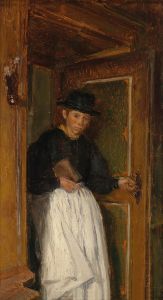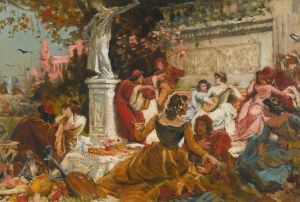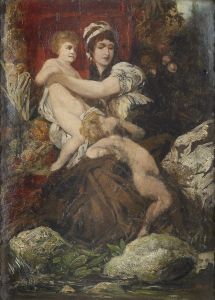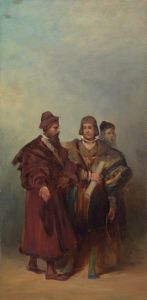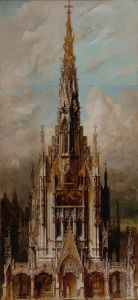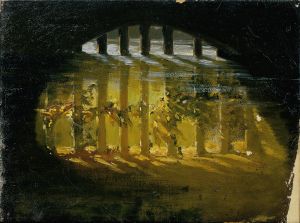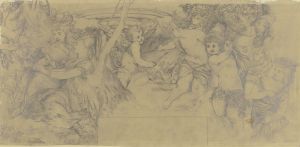
Entwurf zum Festzug 1879 – Die Spengler
A hand-painted replica of Hans Makart’s masterpiece Entwurf zum Festzug 1879 – Die Spengler, meticulously crafted by professional artists to capture the true essence of the original. Each piece is created with museum-quality canvas and rare mineral pigments, carefully painted by experienced artists with delicate brushstrokes and rich, layered colors to perfectly recreate the texture of the original artwork. Unlike machine-printed reproductions, this hand-painted version brings the painting to life, infused with the artist’s emotions and skill in every stroke. Whether for personal collection or home decoration, it instantly elevates the artistic atmosphere of any space.
Hans Makart was an Austrian painter known for his influence on the Viennese art scene in the late 19th century. One of his notable works is "Entwurf zum Festzug 1879 – Die Spengler," which translates to "Design for the Parade 1879 – The Tinsmiths." This painting is part of a series of designs created by Makart for a grand parade celebrating the silver wedding anniversary of Emperor Franz Joseph I and Empress Elisabeth of Austria.
Makart was commissioned to design the parade, which was a significant cultural event in Vienna, showcasing the city's artistic and cultural heritage. The parade took place on April 27, 1879, and was a lavish affair, reflecting the grandeur and opulence of the Austro-Hungarian Empire. Makart's designs were instrumental in setting the tone for the celebration, as they were used to create floats and costumes that depicted various historical and allegorical themes.
"Entwurf zum Festzug 1879 – Die Spengler" is one of the many sketches Makart produced for this event. The painting highlights the tinsmiths, a group of artisans who played a crucial role in the parade. Makart's depiction of the tinsmiths is characterized by his typical style, which includes vibrant colors, dynamic compositions, and a keen attention to detail. The painting captures the essence of the tinsmiths' craft, showcasing their tools and the products of their labor.
Makart's work on the parade was highly praised and cemented his reputation as a leading artist of his time. His ability to blend historical references with contemporary aesthetics made his designs stand out. The parade itself was a testament to Makart's vision, as it brought together various elements of art, history, and culture in a cohesive and visually stunning manner.
The impact of Makart's designs extended beyond the parade. His work influenced the development of the "Makartstil," a style characterized by its opulence and grandeur, which became popular in Viennese art and architecture. Makart's influence can be seen in the works of other artists of the period, as well as in the design of public and private spaces in Vienna.
While "Entwurf zum Festzug 1879 – Die Spengler" is just one piece of the larger project, it exemplifies Makart's skill in creating visually compelling and thematically rich compositions. The painting serves as a historical document, providing insight into the cultural and artistic milieu of Vienna in the late 19th century. It also reflects the broader trends in European art during this period, where artists sought to combine historical themes with contemporary styles.
Makart's contribution to the 1879 parade remains a significant achievement in his career, showcasing his ability to work on a grand scale and his talent for integrating various artistic disciplines. His designs for the parade, including "Entwurf zum Festzug 1879 – Die Spengler," continue to be studied and admired for their artistic merit and historical significance.





